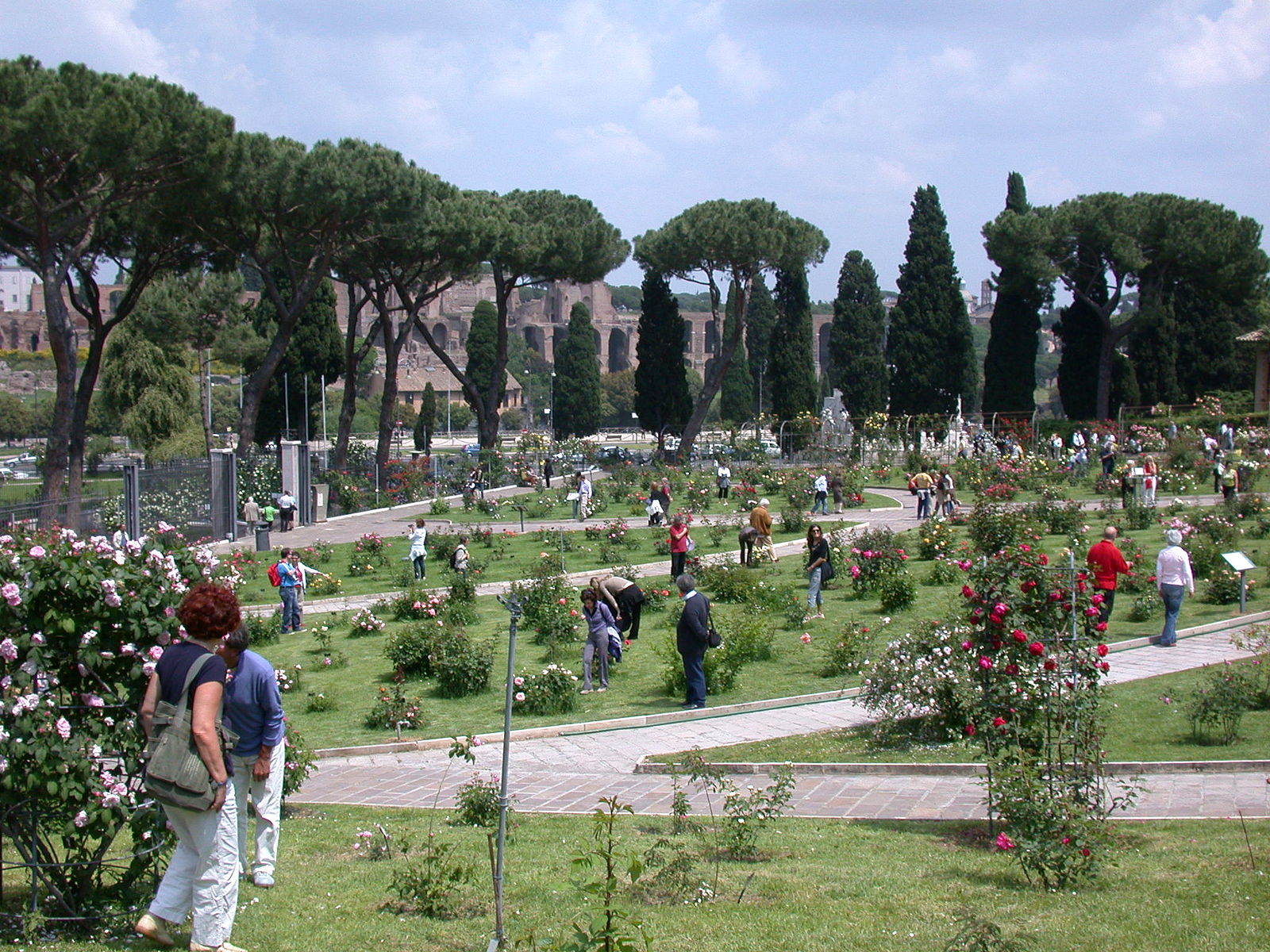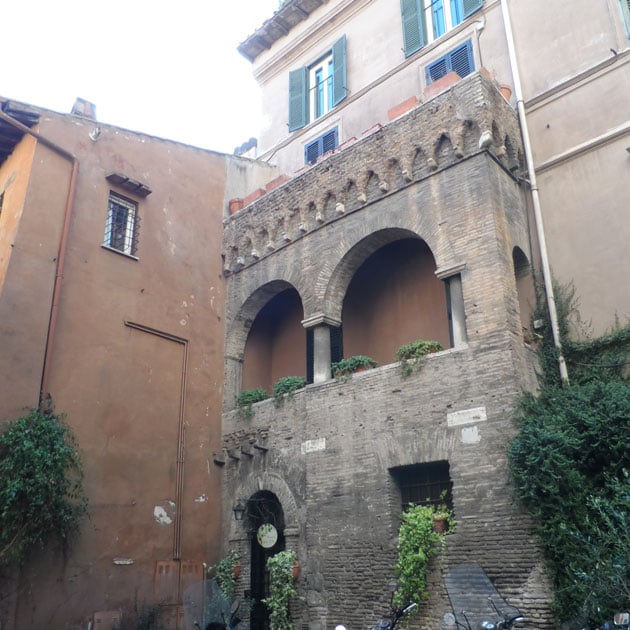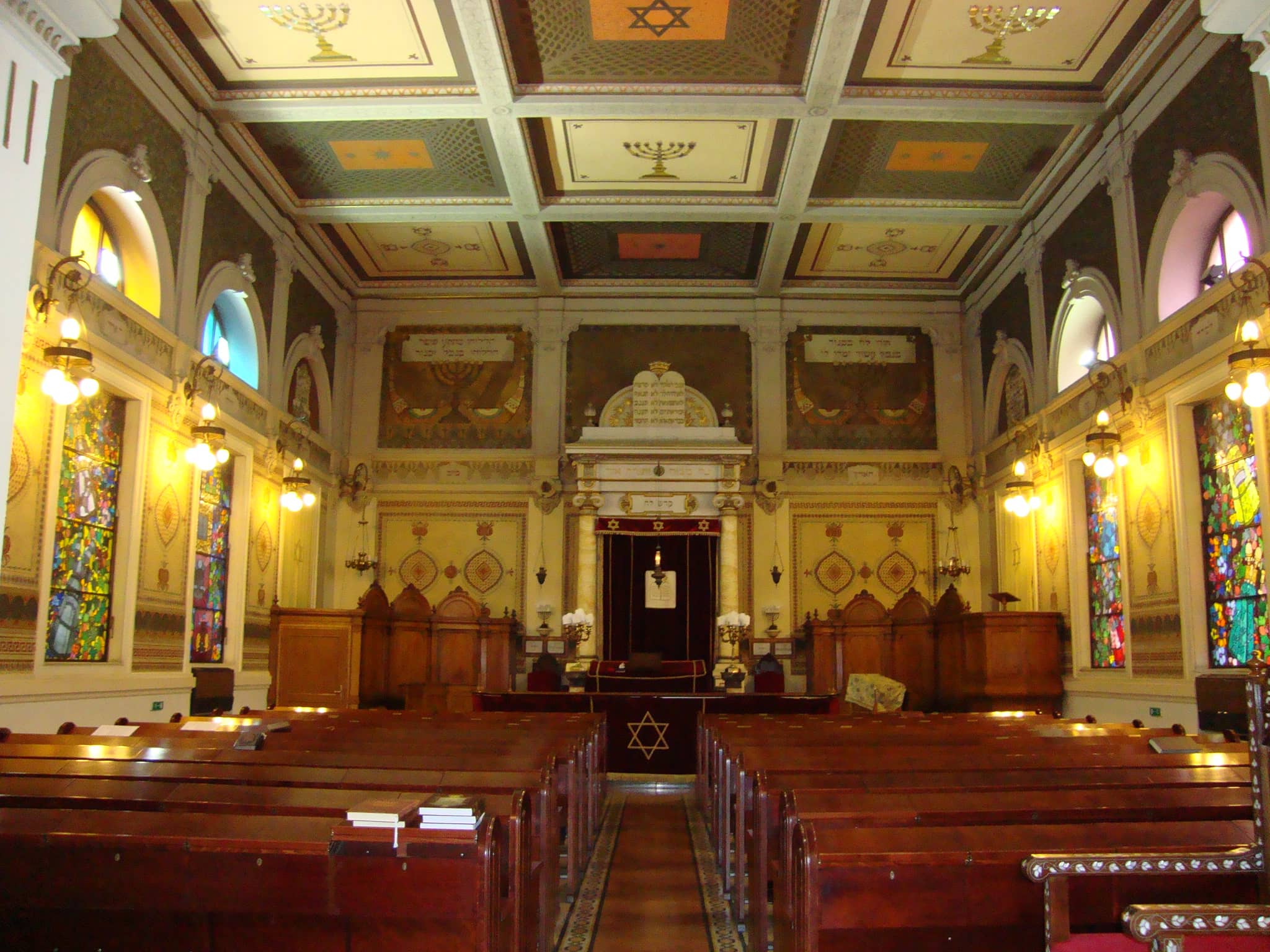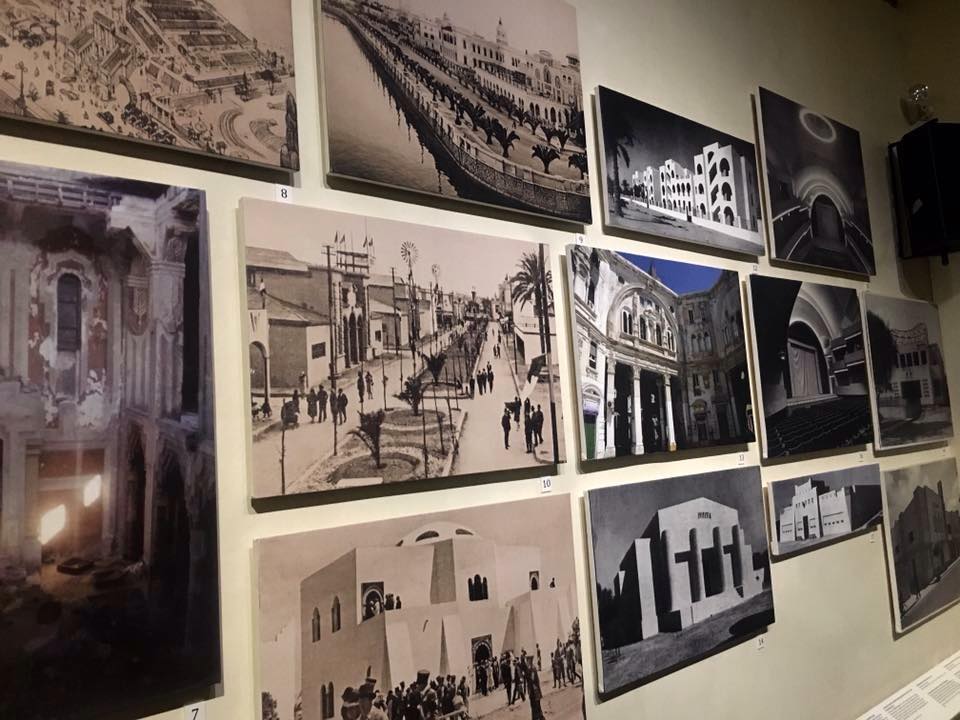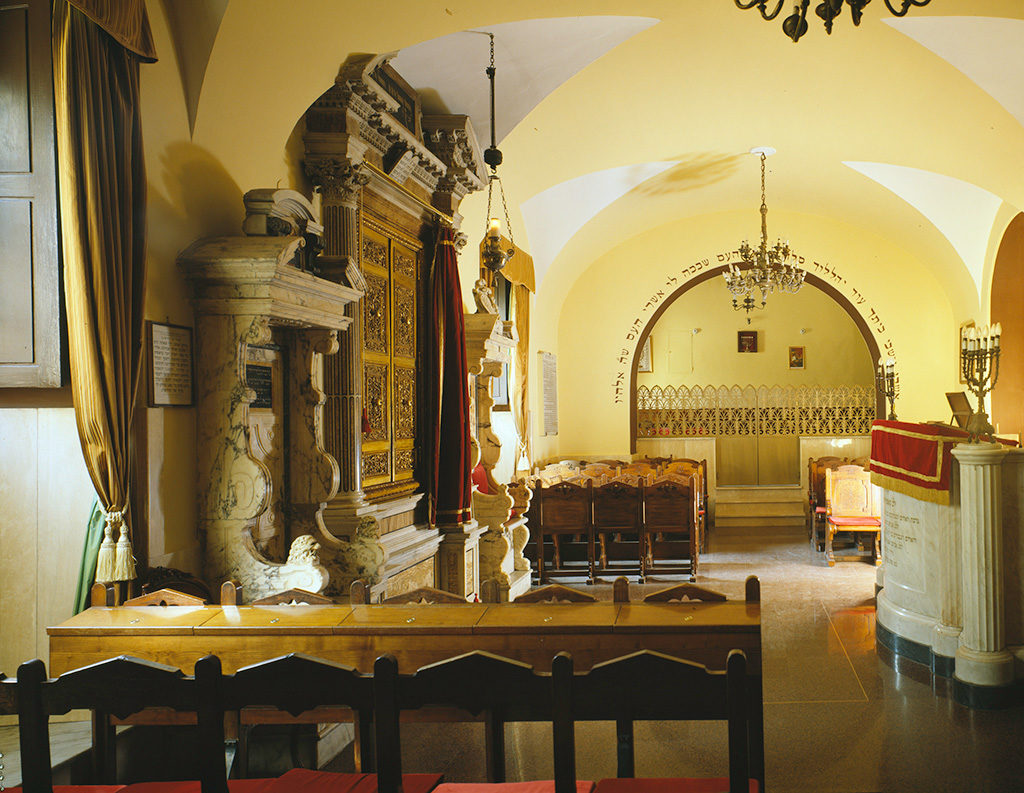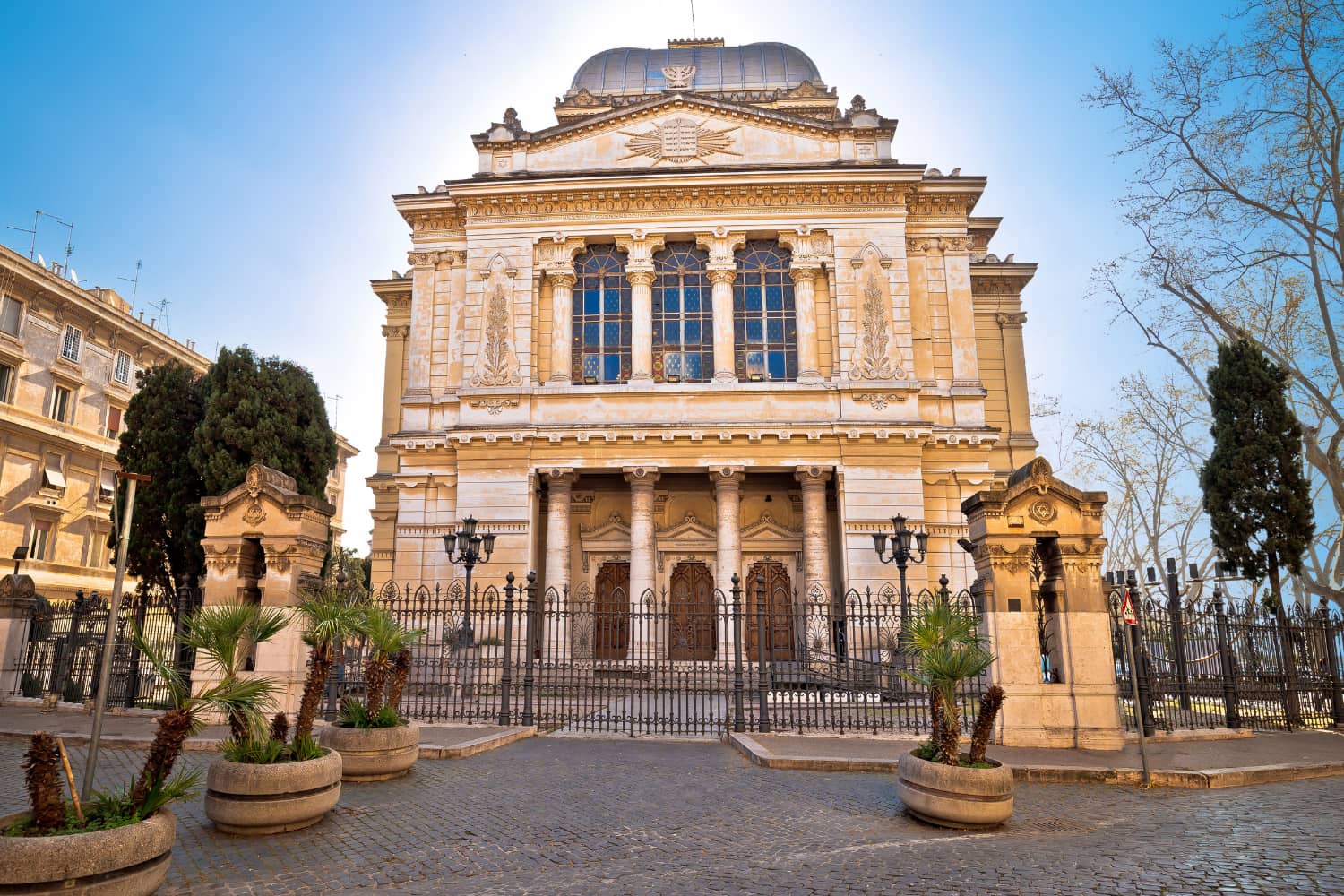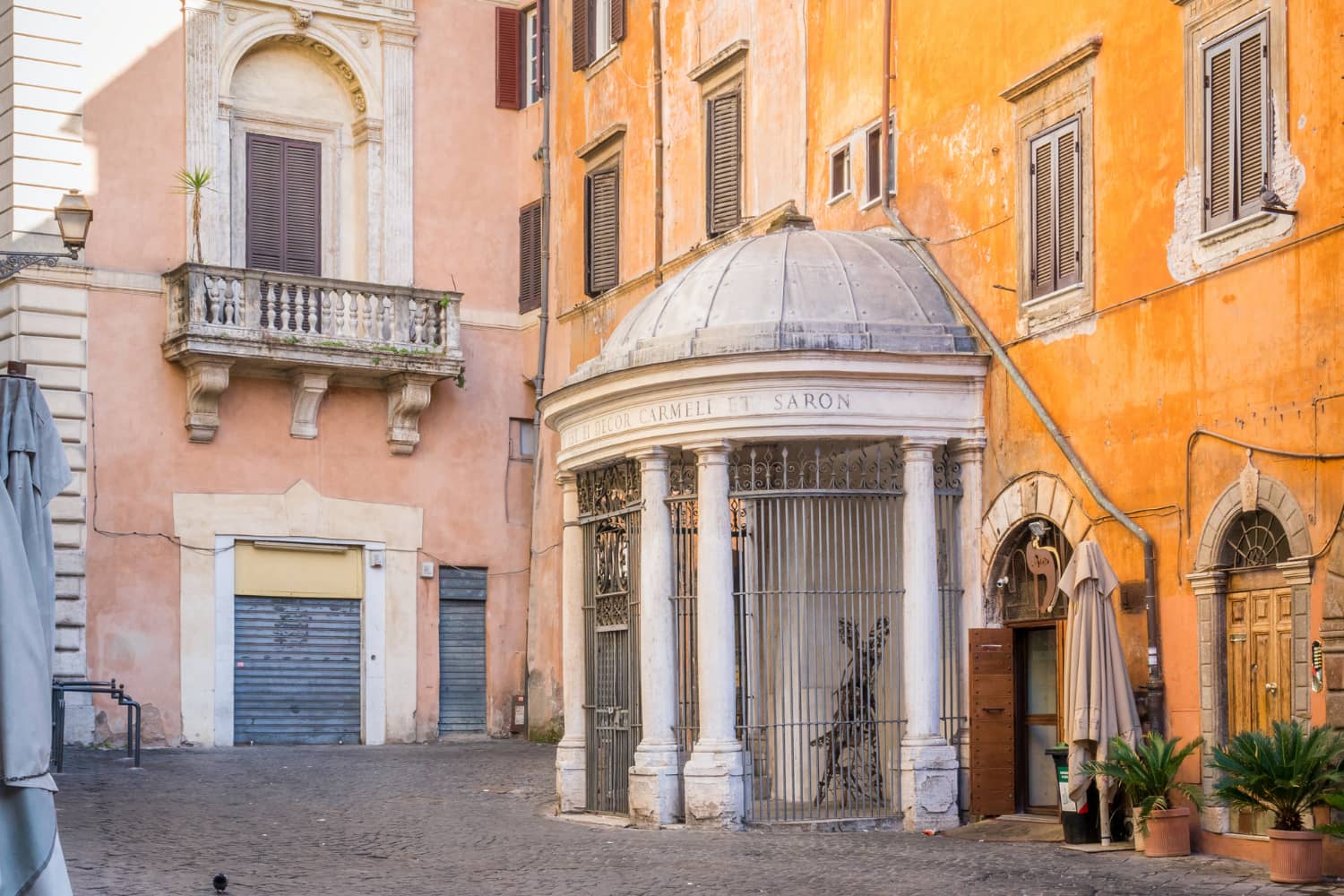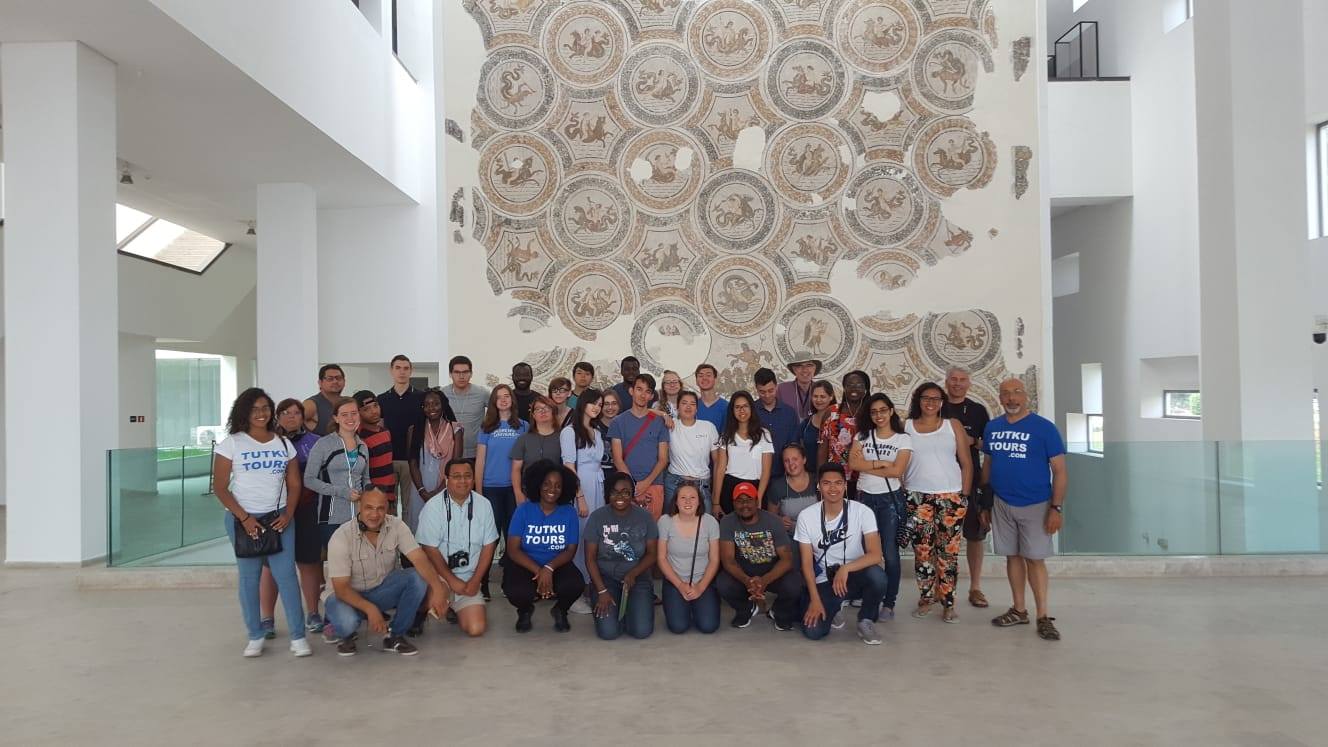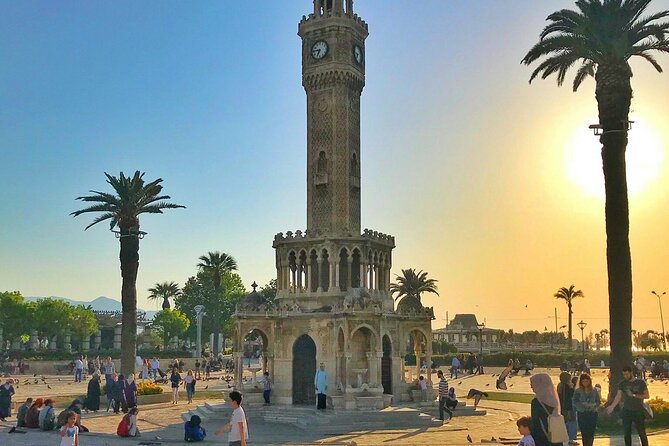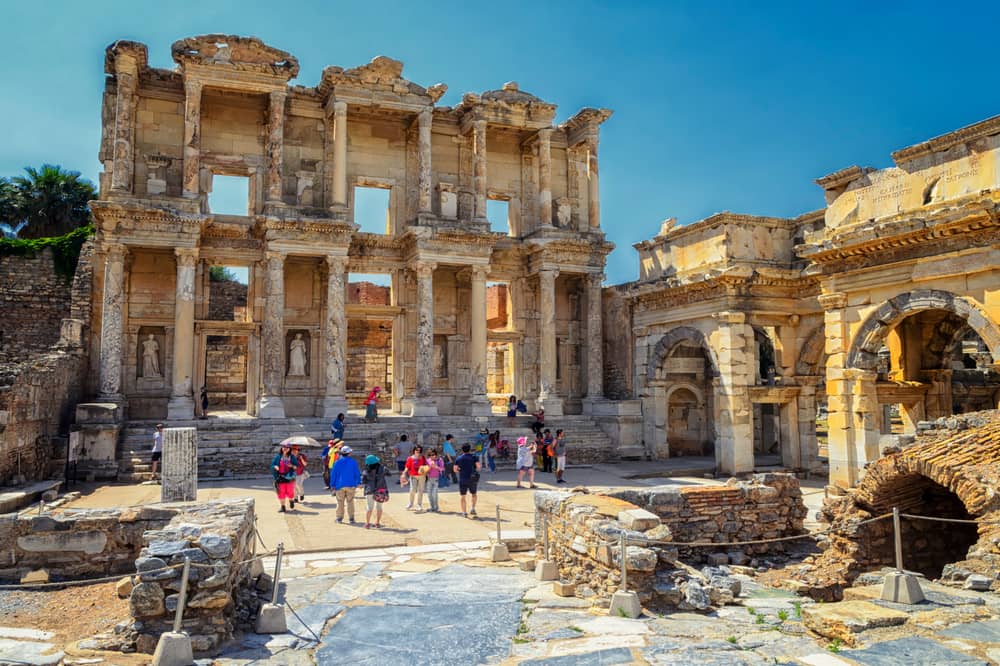The Municipal Rose Garden at the foot of the Aventine was once the Jewish cemetery, prior to its transfer to the Campo Verano.
The previous cemetery at Porta Portese had been abandoned, having been fenced off and reduced in 1587 and eventually seized. A new site at the foot of the Aventine Hill was purchased, expanded several times, and remained operational from 1645 to 1895.
However, in 1934 the Jewish Community was forced to sell the now unused burial ground because of the plan to free the Circus Maximus and open up Via di Valle Murcia. Three hundred and seventy-two tombs and several monuments from the more recent section were transferred to the Campo Verano.
In memory of this place’s previous identity, the pathways of the Rose Garden were laid out in the shape of a menorah, the concentric seven-branched candlestick described in the Bible as being among the ritual ornaments Temple of Jerusalem. The Community also decided to honour the memory of the former Jewish cemetery by placing a stone with the Tables of the Law near the entrance.
Archives: Directory listings
Directory listings
Ancient Synagogue of Trastevere
For a long time, Trastevere was the focal point of the Jewish community in Rome. Then, in the Middle Ages, it gradually shifted to the Sant’Angelo District, where the ghetto was later built.
The building at 14, Vicolo dell’Atleta is commonly identified as the site of the old medieval synagogue in the Trastevere area. The building has a brick façade with a wide two arched loggia, surmounted by a cornice with small arches resting on ledges. The column of the loggia bears an inscription in Hebrew with the name Nathan Hai. This might refer to Rabbi Nathan ben Jehiel, who is thought to have had a mikveh or ritual bath and a synagogue built in Trastevere in the late 11th and early 12th centuries. One of the best-known works by Rabbi Nathan ben Jehiel is his Sefer Ha‘Arukh (literally ordered [words]), a Talmudic dictionary of great importance within sacred literature.
Di Castro Synagogue
A new synagogue was built in 1914, a few years after the large Tempio Maggiore was opened. The aim was to cater for a Jewish population that by then lived throughout the city, having left the ghetto area after Emancipation, or having come from other Italian cities at the time.
The hall bears some of the synagogue features from the Emancipation especially as to the lay-out and various decorative elements.
The tevah and Aron are brought together in a single space, enclosed by a balustrade. They are at the end of the hall, in line with the entrance and facing pews in two parallel rows along the centre. The women’s gallery is above the entrance.
The Oratorio Di Castro also has furnishings which previously belonged to the Cinque Scole: the candelabra on the tevah, the ner tamid and the lamps hanging in front of the Aron are all from Scola Castigliana. The stained glass windows are modern and were made by Aldo Di Castro in 1991.
Since 1972 the basement rooms have housed an Ashkenazi rite synagogue, designed by architect Angelo Di Castro. The candelabra and the gilded wooden doors of the Aron are also from Scola Castigliana.
Jewish Museum of Rome
A first exhibition space was created in 1960, and has been expanded and renewed several times since. A complete scientific overhaul ended in 2005 led to its current organisation, in the basement of the Tempio Maggiore.
The museum describes the history and nature of the Jewish presence in Rome, using testimonies and witnesses: liturgical furnishings, manuscripts, incunabula, historical documents and stone fragments. It focuses on the artistic quality and extent of the collection of ceremonial art passed down from the Cinque Scole, a collection built up over the centuries thanks to donations by families wishing to demonstrate their bond with the synagogue they belonged to.
The exhibition itinerary will take visitors through seven rooms, labelled according to their content and main themes: “La guardaroba dei tessuti” (“The fabric wardrobe”), “Da Judaei a Giudei: Roma e i suoi Ebrei” (“From the Judaei to Judeans: Rome and its Jews” – the settlement, from their origins to the establishment of the ghetto), “Feste dell’anno, feste della vita” (“Feasts of the year, feasts of life”), “I tesori delle Cinque Scole” (“The treasures of the Cinque Scole”), “Vita e Sinagoghe nel ghetto” (“Life and Synagogues in the Ghetto”), “Dall’Emancipazione a oggi” (“From Emancipation to the present day”), and “L’ebraismo libico” (“Libyan Jewry”). The outer space in front of the entrance houses the “Gallery of Antique Marbles”, with important stone artefacts dating from the sixteenth to the nineteenth century, from the Cinque Scole and the Confraternities of the Ghetto.
The Museum has also an access for wheelchair users and includes a guided tour of the Tempio Maggiore and the Tempio Spagnolo.
There is a Bookshop selling books and souvenirs close to the ticket office.
Spanish Temple – Tempio Spagnolo
A small Sephardic (Spanish) rite temple is in the basement of the Tempio Maggiore. This is a legacy of the ghetto’s Scole, where versions of this rite were observed. Originally located elsewhere, it was transferred here in 1932. The furnishings of the Cinque Scole restored and brought here In 1948.
The hall has an elongated rectangular shape and the bi-focal layout of the Ghetto Scole: the Aron and tevah face each other at the centre of opposite walls – in this case along the longer sides -, while the pews are arranged to face them.
The Aron in polychrome marble comes from Scola Nova; the original tympanum had to be removed because of the height of the ceiling, and at its sides the seats belonging to the tripartite structure of the Aron from Scola Catalana made between 1622 and 1628. The tevah comes from the Scola Castigliana: it was donated in 1851, and is the last, large marble item purposely made for the Cinque Scole.
Great Synagogue of Rome -Tempio Maggiore
The imposing building of Tempio Maggiore (The Great Synagogue of Rome) stands on one of the four large blocks put up after the ghetto had been demolished.
Its monumental proportions symbolize the new-found freedom and citizenship rights granted to the Roman Jewish community that had been living in the city for twenty-two centuries.
The building was designed by Vincenzo Costa and Osvaldo Armanni, and inaugurated in 1904. Their choices in style led to an eclectic architecture, with Greek-inspired elements that were felt to be in keeping with the shape of the main local monuments, a style influenced by Assyrian-Babylonian motifs .
The building has a Greek cross plan with a segmented dome above, clearly visible in every panoramic view of the city.
Inside, long rows of pews face the polygonal apse at the end of the hall where a ceremonial raised space enclosed by a balustrade connects the tevah to the Aron. The Aron stands out against a splendid polychrome background with its imposing aedicule structure, with white Assyrian-style columns, friezes and gilded arabesques, and the high tympanum culminating with the Tables of the Law.
The women’s galleries overlook three sides of the hall, and are supported by rows of columns and framed by four large central pillars holding the dome up.
Fine marble furnishings from Cinque Scole (demolished in 1908) are at the top-end of the side aisle in the Temple. The pieces date from the 16th -17th centuries.
The Roman Ghetto
In 1555 Pope Paul IV established the ghetto, with the papal bull “Cum nimis absurdum” (“It is truly absurd”). Nearly two thousand Jews were segregated in the unhealthy area roughly between what is now Via del Portico d’Ottavia, Piazza delle Cinque Scole and the River Tiber, which meant the ghetto was often flooded by the river. Their numbers would grow to five thousand by the 19th century.
Not much remains of the district’s original crowded and multi-tiered lay-out. When it was finally opened up in 1870, a regeneration plan for the capital city led to it being completely gutted and rebuilt into four large, modern blocks.
As far back as the 13th century, numerous groups of Jews had settled in the Sant’Angelo District, attracted by the large number of merchants and crafts in the area.
The ghetto area was enlarged in several waves, so that by the 18th century it had five entry gates. Piazza Giudea was roughly between what are now Via del Portico d’Ottavia and Piazza delle Cinque Scole; this is where the main allowed business – money lending and second hand trade, especially cloth – took place.
On Piazza delle Cinque Scole, approximately where number 37 is today, the building of the Cinque Scole once stood; it was demolished between 1908 and 1910.
The building of the Cinque Scole stood on the square by the same name, approximately where number 37 is today. It was demolished between 1908 and 1910.
According to the Papal Edicts, all the synagogues of the various Jewish congregations living in Rome had to be housed together which meant five synagogues from different traditions were brought under one roof.
The ghetto was demolished between 1886 and 1904 under the 1873 development plan of Roma Capitale. The area where it stood for three centuries is still today the heart of Jewish life in Rome.
Jewish Heritage Tour Izmir
Departure from your hotel. Visit Bet Israel Synagogue which is the largest synagogue in Izmir built in 1907. Then visit the Kemeraltı district and see the Synagogues street. Visit the Bikur Holim synagogue founded in 1724 by Shlomo de Chaves, who donated the building to the community for use as a synagogue. The name of the synagogue ‘Bikur Holim’ was given to it when the basement of the building was converted to a hospital during the cholera plague that struck the city. Then continue to Algazi Synagogue located at the heart of the ancient complex of synagogues in the market place in Izmir, is one of the most beautiful of its kind in the city. Built in 1724 and renovated several times it is associated with the Algazi family, who was a well-known family of poets and rabbis in Izmir. Rabbi Shlomo Elgazi, a disciple of Rabbi Yosef Eskapa, was known with his firm opposition to Shabbai Zvi during the turbulent days of this episode. This synagogue also suffered from ravages of time and nature and was renovated several times. At the same area we will also see some abandoned synagogues then we will proceed to Senora Synagogue built in the sixties of the 17th century, but since then has gone through far-reaching changes, constructions, and many renovations. Its structure is a beautiful gem, with an entrance through an iron gate, hiding behind it a lovely garden leading to the upper women’s gallery at the synagogue. Back to the hotel, end of our services.
Izmir Jewish Heritage Tour and Synagogue Visits
You will be/can be met at the Kusadasi or Izmir Harbor, Izmir airport, or even at your Hotel in
Izmir and Kusadasi. Then drive to the Karatas area in Izmir.
Visit Beth Israel
Synagogue:
The construction of the Bet Israel Synagogue started on 15 March
1905 upon the decree of Sultan Abdulhamid II, and it was opened to worship in
1907. Bet Israel is the largest, most magnificent, and ceremonial synagogue in
Izmir. However, the temple differs from the traditional Izmir style with its
building style and seating arrangement. It was not built with a central plan
but has been a double practice of Teva from the very beginning. Due to the
location of the building plot, the Ehal (the closet where the Torah rolls are
stored) is placed on the south wall instead of the east wall.
Dario
Moreno Street:
It is located on Dario Moreno Street. There are old
Greek houses lined up left and right in this beautiful street, named after the
famous artist Dario Moreno from Izmir and was formerly called Elevator Street.
There is also the house on the street where Dario Moreno lived for a while.
These houses, each of which has been transformed into small and cute cafes and
art workshops today, add a different spirit to the street.
The Historical
Elevator:
The Historical
Elevator is the best structure to catch the unique view of Izmir Bay with its
promenade at the top. The elevator was built in 1907 by Jewish businessman Nesim
Levi to overcome the topographical barrier between hill neighborhoods above sea
level. Then drive to Konak Square and visit the clock
tower;
Konak Square – Clock Tower- Kemeralti Bazaar:
Izmir Clock Tower, the symbol of Izmir, is the Ottoman Sultan II. It
was built in 1901 as part of the 25th-anniversary celebrations of Abdulhamid’s
accession to the throne. Kemeralti Bazaar is called a
well-established commercial area. This commercial square, which was started
from the Hisar Mosque built in Izmir in 1592, has grown more and more. Since
the 19th century, inns and covered bazaars have been located in the Kemeralti
Bazaar, which has been the liveliest trade point in İzmir. However, the shops
here were referred to as small businesses that local people were interested in.
Options such as blacksmith, coal maker, nail maker, spice and straw bazaar were
located in Kemeralti Bazaar in the past. Commercial shops in different areas
were also found at various points.
Havra Street:
Havra Street, named after the
many synagogues in its vicinity, was a lively shopping center where Kosher
(Halal) food was produced and sold. According to their beliefs, the Jews of
Izmir used to obtain a significant part of their food needs, such as meat,
fish, chicken, yogurt, cheese, and eggs from Havra Street. As with other foods,
wine production was produced in and around this street in accordance with
Kosher rules. You will also have the opportunity to taste the dishes in the
Sephardic cosine. End of the tour drive back to the hotel.
Ilker A
I offer PRIVATE TOURS OF TURKEY, Istanbul, Cappadocia AND EPHESUS TOURS to group or individual CRUISERS / TRAVELERS who would like to visit historical / modern, biblical and spiritual perspectives of Turkey with PRIVATE EPHESUS TOUR SHORE EXCURSIONS guide from KUSADASI, Bodrum, Cesme, Marmaris and IZMIR PORTS, airports or hotels.
I have been ready to guide you privately and locally since 1998. I studied English language teaching, history, traditions, religions ( Christian and Jewish Heritage in Turkey, particularly in Ephesus and Izmir area and Istanbul) and photography. I have always been studying to learn and have been researching the most recent archaeological studies/excavations as much as possible in order to keep myself and my guests updated.
